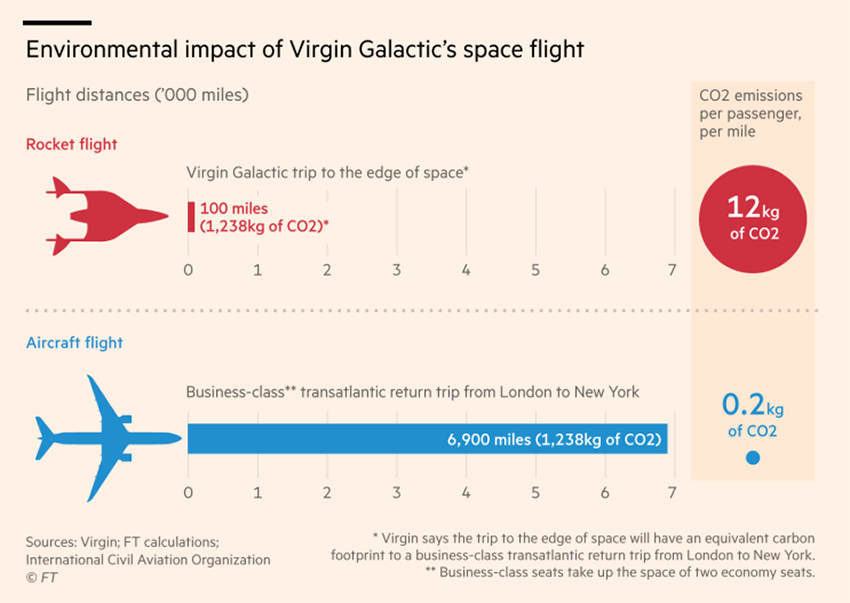As the Financial Times writes,
“Both claim green credits for their endeavours. Branson’s space flight company Virgin Galactic says it has a focus on “environmental sustainability.” Bezos believes space travel provides a potential solution to climate change. But the power required to fly there deserves examination.”
Neither requires anywhere near the amounts of CO2 necessary to archive orbit. Blue Orbit, the Bezos endeavor, uses liquid hydrogen, creating CO2 in its production; it is derived primarily from fossil fuels, but none in its use as a propellant. Branson’s flight, which combines the fuel necessary for an air take-off and a solid fuel propellant, generates CO2.
“Virgin Galactic likens the carbon footprint for passengers to a business class return ticket on a transatlantic flight. Using data from the International Civil Aviation Organization that means about 1,238kg of CO2 per passenger.”
While the analogy is useful, the CO2 cost per mile is perhaps more revealing.

Source: Carbon counter: space tourism’s environmental payload




